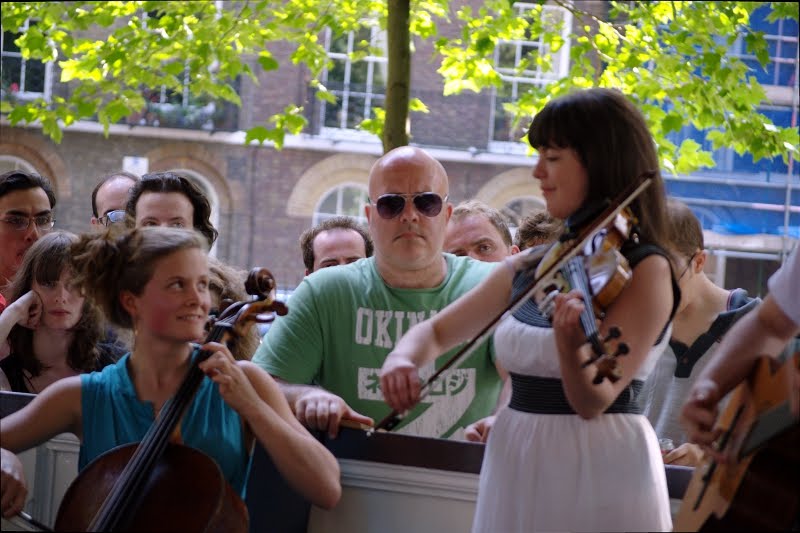
Anybody know what the picture above is of? I'm not sure I could guess if I didn't know already. It's someone's eye. In fact, it's the eye of a musician who goes by the name Shura, but you can't really tell it's an eye at all. There's a lot of smearing which means that detail is lost; there is lots of speckling, particularly in the shadowy areas; and although it's not too bad here, there is sometimes a lack of contrast because regions of low contrast are wiped out by the noise, which tends to be quite contrasty.
Noise is caused by the electronics of the camera (or the scanner, if you're scanning film. N.B. noise is not to be confused with film grain). A large percentage of noise comes from the sensor in your camera, and in general, the larger the sensor, the less noise in the images. This isn't the whole cause, since there's also an effect that comes from the closeness of the light-sensitive photosites on the sensor itself. In general, the large, expensive cameras will have a large sensor (often called a full-frame sensor, because it's almost the size of a frame of 35mm film). Prosumer level cameras have an APS-C size sensor, which is considerably smaller (1.5--1.7x smaller) than full frame. Most compact cameras and MSCs/CSCs (like the new Olympus Pen series) have sub-APS-C-sized sensors, and thus suffer from larger degrees of noise. Some of this noise will be cleaned up by the camera's software when it processes the image that you've taken, but some remains, especially when you have the camera set at a high ISO, that is, the sensitivity of the sensor is pumped to higher levels.
In this picture, the problem is lack of light. I'm in a dark room, I'm quite far from the stage, and the little tiny photons reflected off Shura's face aren't finding their way into the end of my lens. Here I'm shooting at 90mm on my zoom lens, with an aperture of f/4.5, a shutter speed of 1/40s, and my ISO is bumped all the way up to 6400, which is pretty much the useable limit on my camera. In fact, I'm probably shooting beyond the limits of my camera here. As a rule of thumb, your shutter speed should be faster than one over the focal length you're shooting at. So because I'm at 90mm here, I should be shooting at 1/100s to eliminate any camera shake that occurs when I take the picture. If I was to shoot at 1/100s, the picture would be underexposed because there wouldn't be enough time on the exposure to collect all the necessary photons. I could open up my aperture to make it wider (e.g., f/2.8, see diagram below), but for this lens, f/4.5 is my limit. Luckily on this lens I have vibration reduction, a system which tries to compensate for camera shake. This can often give you a 3-4 stops of light bonus, so that even though I'm shooting at 1/40s it can seem like I'm shooting at 1/320s in terms of camera shake. And this image in general is quite sharp, so I'm happy.

Is there anything that can be done about the noise in the top image? There is a little bit of rescuing that can help the situation. It depends on your post-production software (Photoshop, Lightroom, GIMP, etc.), and how adept you are at tweaking the settings, how successful this is. Personally, I'm pretty useless at this. I use a stand-alone piece of software which is called Neat Image. You select a region in the photo where there's no drastic colour change, and it analyses that region and removes the noise from the whole photo depending on what it finds. It has mixed results, depending on the quality of the region you've selected, see below.

As you can see, it's done a pretty good job of removing the speckles (luminance noise) and the random blobs of blue/green/yellow/red (chroma noise). The payoff is that the image is now a lot more soft than it was before, which means that we need to sharpen the image carefully, and potentially more than we normally would for a noiseless image. But when it comes down to either taking a noisy image or taking no image at all, it's probably best to take it, and do the best you can with the noise post-production:

The difference can be seen particularly in Shura's face, the shadow areas (compare the noise top-left to bottom-right), and any areas of solid colour, for instance in the red curtain. Differences may appear be minimal on this scale (800 pixels), but when blown up they make a clear distinction between an ugly photo and a not-so-ugly one.

